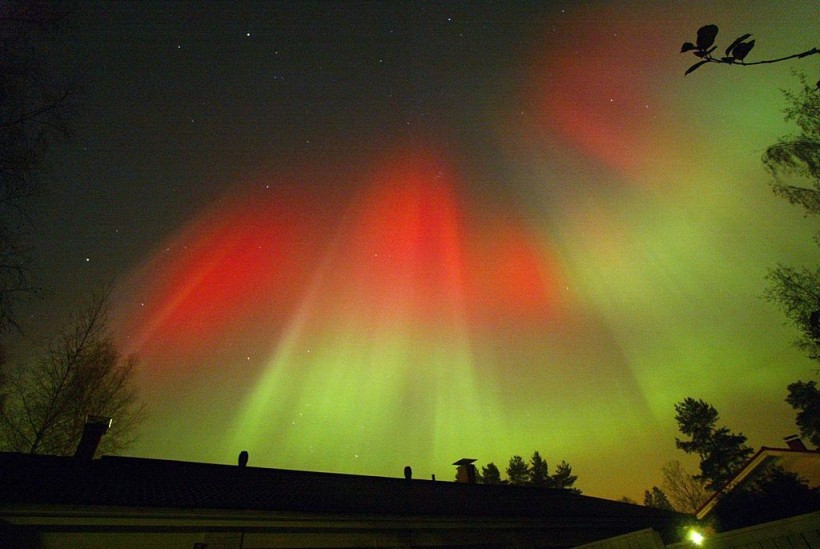On Friday, the southern United States was covered by the northern lights and their magnificent crimson glow, which could be seen down in Florida.
An Uncommon Sighting
The Chiefland Astronomy Village caught the edge of March 24th's aurora, and it's further into Florida than I expected. The last time this happened (2003) the space weather was much, much worse, making this a major sign of Earth's increasing vulnerability to the Sun's activity. pic.twitter.com/WgzMFccGfX
— Book of Katherine (@bookofkatherine) March 28, 2023
The uncommon sighting of northern lights, or aurora borealis, of any color thus far south is due to a powerful Category G4 geomagnetic storm in our atmosphere. The coronal mass ejection-the sun's discharge of a magnetic field and its plasma-caused the storm.
The Sun-Earth environment news website Spaceweather.com received a shot of the red aurora captured in Florida by astrophotographer Bill Williams. I asked the astronomer of Chiefland Astro Village, "What in the world occurred to our western horizon the night of March 23-24," he wrote. "
They concluded that it was most likely airglow since there were no rocket launches or wildfires. The mystery was solved the following day as Spaceweather.com described a "severe geomagnetic storm" well-seen in the U.S. As far as I am aware, at 29.4 degrees north latitude, we are the farthest south this aurora has been observed.
On the same night, breathtaking lights were seen across the nation, from Colorado and New Mexico to Canada, due to the same geomagnetic storm, thought to be the STRONGEST in nearly six years.
Also Read: Sunspot Growing at an Exponentially Fast Rate, Should We Worry?
What Causes Auroras

The magnetic solar storm arranged a colourful show of aurora borealis in the night skies of Hyvinka in Southern Finland early morning, 31 October 2003.
When solar flare X-rays or coronal mass ejections (CMEs), which are solar plasma plumes, collide with the Earth's magnetic field and atmosphere, they produce auroras.
Martin Connors, a professor of space science and physics at Athabasca University in Canada, recently told Newsweek that "almost all magnetic effects at Earth are due to a combination of the solar wind magnetic field and pressure." The solar wind typically travels at a speed of 300 to 700 km/s (about a million miles per hour), contains up to 10 particles per cubic centimeter (like 10 atoms the size of a sugar cube; most people refer to this as a "vacuum"), and has a very weak magnetic field that is much smaller than the magnetic field that rotates compasses on Earth's surface.
The gas atoms in our atmosphere are affected by these solar winds, which excite them and cause them to release light as the aurora, spreads waves of color across the night sky.
According to Brett Carter, an associate professor of space science at RMIT University in Australia and a source for Newsweek, "the colors in the aurora are the result of particles in the upper atmosphere becoming excited by collisions with particles coming from within the magnetosphere and some from within the solar wind." The diverse colors are caused by electrons relaxing at various energy levels from oxygen (which produces the most frequent reds and greens) and nitrogen (which produces dark reds and blues).
Reactions produce brighter green hues lower in the atmosphere, while red colors are released higher. Because they see the top of the aurora, the northern lights look redder the further south a viewer is.
As there aren't many oxygen atoms present at such high altitudes, the red hue is typically quite faint, according to Daniel Brown, an associate professor of astronomy and scientific communication at Nottingham Trent University in the U.K., who spoke with Newsweek in February. Nevertheless, if the activity is great enough, as it is right now, the coronal mass ejections include enough excited particles to interact with more oxygen and brighten the red.
Reaching Far
The aurora was captured by Williams in Florida on March 23 and 24, when stronger geomagnetic storms caused the lights to become visible farther and farther from the poles. In Tasmania, Australia, the southern lights, or aurora australis, were also seen farther north than usual.
The Space Weather Forecasting Center of the National Oceanic and Atmospheric Administration reports that geomagnetic storms can have various other effects on the globe besides these stunning displays. On a scale of 1 to 5, geomagnetic storms are categorized, with weak G1 storms only causing small power grid oscillations and auroras in the most northern states. However, "extreme" G5 storms may cause significant voltage management issues, power outages in some power grids, and difficulties with low-frequency radio navigation.
Related Article: Can Powerful Solar Storms Have the Power to Destroy the Entire Planet?
For more cosmic news, don't forget to follow Nature World News!
© 2024 NatureWorldNews.com All rights reserved. Do not reproduce without permission.

![Tsunami Hazard Zones: New US Map Shows Places at Risk of Flooding and Tsunamis Amid Rising Sea Levels [NOAA]](https://1471793142.rsc.cdn77.org/data/thumbs/full/70325/280/157/50/40/tsunami-hazard-zones-new-us-map-shows-places-at-risk-of-flooding-and-tsunamis-amid-rising-sea-levels-noaa.jpg)



